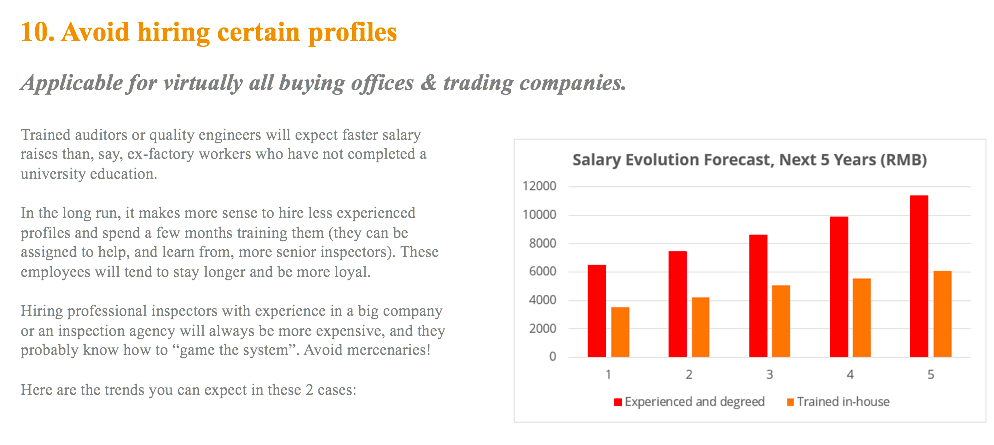Over the years I have given a lot of advice on this blog to help importers save costs on quality control inspections. It seems to be a topic of high interest to many buyers.
There is a funny thing about inspections. In many supply chains, QC is a must… and at the same time it feels like such a waste of money.
1. QC is a must…
There are two reasons for this.
First, if you give an order to an unproven manufacturer, there is a high probability that their production doesn’t come out as you expect.
There might be aesthetic/finishing issues. Many pieces might not function as needed. They might decide to use substandard materials/components. They might run the products through testing stations that are incorrectly programmed. And so on and so forth.
You need to give them feedback about this ASAP so they can do course corrections!
If you wait until the whole batch is completed and packed, the factory managers will probably be unwilling to open all the boxes, check and sort all the production, do rework, and repack. Not to mention, in some instances rework is impossible and they’d have to reproduce a portion of the order for free — this is really not likely to happen.
The second reason is, you need to confirm that the quantity, the packing, the labeling, and the average product quality are up to your standard before you ship the goods out.
If you let a supplier ship the goods to you from China/Hong Kong, you will most certainly have paid 80+% of the order value. If you find issues after shipment, you no longer have real leverage… not to mention, returning defective products to China is no easy task!
In both cases (not catching issues during production, and not catching issues before shipment), the buyer pays for the consequences in shipment delays, quality issues that couldn’t be properly fixed, and a much more tense relationship with the supplier.
Extra reading >> If you’d like to learn even more about QC, read our detailed Quality Control basic concepts post here.
2. … but it is wasted money!!
All right, so you need inspections in your toolbox. In many cases they make business sense.
And, at the same time, you can’t help to wonder why you need to check what the suppliers have made [and should have checked]. QC inspections create no value (except if your customer “buys” inspection reports as part of your offer, as it makes them feel better).
In an ideal world, inspection would be done at the source, wherever possible with vision systems (by the way this will become more prevalent as artificial intelligence research progresses), and with very little human double work.
Oh, and Chinese suppliers will really have to get more reliable. With the exception of complex and custom-made equipment, buyers of Japanese or Korean products seldom send an inspector to the factory…
3. How to do QC inspections catch issues but FOR LOWER COSTS
This is where “working smarter, not harder” becomes really necessary.
22 Ways To Cut Costs on Your Quality Inspections
We have gathered our best advice into an e-book on the SynControl website. It is an easy read. You can select and read only the approaches that make sense for your company.
Some companies have applied several pieces of advice from this e-book and reduced their QC costs by up to 80%. I can’t name any company for confidentiality reasons but you will understand how it is possible by reading this e-book.
It took us some time to make it nice and useful. Looking forward to your comments!


As per AQL chart 5 pcs is acceptable for Major defects and 7 pcs is acceptable. If I find 5 pcs major defects and 6 minor defects then goods will be failed or passed? Because all together 11 defects and this exceeds atleast a level of acceptance (5 or 7).
In this case they will be accepted.